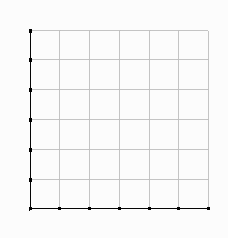 |
 |
|
US |
Mex |
| a = autarky; A is cheap | a = autarky; A is expensive |
| specialize in A until costs reach global levels; export A | specialize in B and away from A until costs reach global levels; export B |
|
February 10, 2012 |
II. A closer look at international trade
A closer look at why nations trade, what they trade
and what happens when they trade.
Three broad categories of focus:
Efficiency / Technology / Variety
A. Factor endowments
and international trade:
the Heckscher-Ohlin (HO) trade model
the HO model draws on factors of production to explain international trade.
Factors of production = the basic economic inputs
used to produce outputs: labor, capital and land
1. 2 Swedish economists first put it together
(Heckscher:1919; Ohlin:1933).
2. Perhaps the most elegant model in all of economics.
3. It's the point of departure for all other trade explanations
Advantages:
1. Shows where CA can come from
2. Shows how factor prices are affected by trade.
Importance of this: as consumers, we are concerned with output prices
AND with incomes.
We earn income by providing resources we own to producers--labor,
capital, natural resources.
So the factor-price effects of trade influence affect the
distribution of income and therefore the gains from trade.
HO is a
long-run model. It predicts what will happen after all markets have
had time to adjust.
Rules out unemployment
Basic model
--The (2x2x2) model:
| 2 goods: | 2 countries: | 2 factors of production: |
| Advanced (A) | U.S. | Labor (L) -- unskilled |
| Basic (B) | Mex | Capital (K) -- physical and human |
Labor: pure labor
power, raw unskilled L, we all have that to offer
Capital: includes
human capital (KH), investments in skills and training
Preview:
Trade and wages quotebook
HO can shed light on the validity of these sorts of quotes
Note the key departure from Ricardo here: More than
one input.
3 simplifying assumptions: Both
countries have...
(1) the same tastes
(2) the same available technologies
(3) perfectly competitive industries
Note: these assumptions rule out tastes, technology,
and market power in order to focus on differences in supply conditions across countries.
2 distinctive
assumptions:
(1) relative factor endowments differ across countries:
(K/L)us > (K/L)mex
What we say: "The US is capital-abundant
compared to Mexico" or "Mexico is labor-abundant compared to the US."
Note: it's not total K or L that matters, but K per L.
(2) relative factor intensities
differ across products:
(K/L)A >
(K/L)B
What we say: "A is capital-intensive compared to B" or
"B is labor-intensive compared to A."
Example: labor = 90% of the cost of gardening and 70% of the
cost of garments => garments are capital-intensive compared to gardening /
gardening is labor intensive relative to garments
Note: producers of both goods want to substitute in
favor of labor when PL falls and/or
PK rises, but the ranking of the two goods does not
change.
1. The Heckscher-Ohlin (HO) theorem
pertains to the
direction of trade
Consider the circumstances we've just laid out:
The US is capital-abundant compared to Mexico.
A is capital-intensive compared to B.
How it looks:
US, Mex PPFs
 |
 |
|
US |
Mex |
| a = autarky; A is cheap | a = autarky; A is expensive |
| specialize in A until costs reach global levels; export A | specialize in B and away from A until costs reach global levels; export B |
At a, PPFus is flatter than PPFmex
At f, PPFus has same slope as PPF mex
?If the US and Mexico trade with each other, what
pattern would you expect?
US exports A;
Mexico exports B.